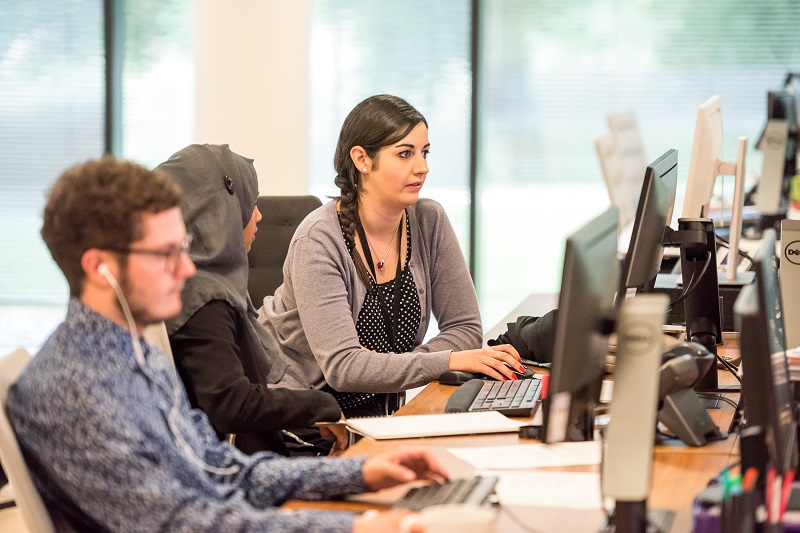Employee Experience is Everything!
Defining employee experience in traditional HR was very clear. Due to the changing face of competition and talent war, employee experience definition looks quite different today depending on the organization. The relationship between employer and employee had developed since the utility era. During the utility era, the relationship with the employee had the simplest form. It was limited to the essential tools and resources provided for the employees to get their job done. The productivity era followed the utility era, where organizations focus on task completion and the rate of productivity per employee. Still, there was no answer to employee expectations and needs, and the organization could not create a place where the employee would genuinely want to remain in it.

Engagement Era
That’s when HR understood they should pay more attention to values beyond just extracting more from employees. Hence the era of engagement or enlightenment was born, emphasizing understanding employees’ expectations and their view over the organization. The engagement measure categorizes three types of employees: actively disengaged, not engaged, and engaged. Organizations measure engagement by conducting surveys with different frequencies. Continuous measurement is the top priority in the human-associated analysis. Running a short pulse survey weekly, monthly snapshots, semiannual reviews, and a larger state of the company survey could help reflect what’s going on in the company. Yet, these frequent pulsings work as adrenaline shots that boost employee satisfaction and happiness temporarily. In other words, employee engagement effort does not necessarily create trust and loyalty and brings no long-term business impact for the organization. So the organization in desperate need of an ongoing design.
Employee Experience Definition
Employee experience is the long-term redesign of the organization. To define employee experience, one may confuse the concept with the customer experience and expect to see a roadmap of the employment life cycle. Describing employee life-cycle from the first impression toward an organization that leads to recruitment and passing onboarding process resulting in retention and looking for progress, would not provide an insight over what is going on. So employee experience is not merely an employee-organization relationship. Employee experience is not entirely independent from engagement, yet we should highlight the distinguishable differences.
Employee experience considers both employee’s and employer’s point of view and the overlap between the two. Both parties create employee experience and get involved in it. For those who are members of a team or an organization, the experience is the reality of working there. On the other hand, the organization believes what it designs and creates for its members is the “employee experience” reality. The organization’s view is debatable. The employee will not necessarily perceive the organization’s intentions from the provided facilities. So it is indispensable to consider both parties’ mutual thoughts and comprehensions.
Employee experience Design
The organization is not just designing the employees’ experience; it needs employees’ cooperation to complete. The first step toward employee experience design is obtaining a general understanding of workforce personalities and their need and obsessions. In other words, knowing who they indeed are. Employee experience design is a human-based process which varies from one person to another based o their emotions, attitudes, and perception. So it is a complicated and time-consuming process. It acquires transformational leadership practices where managers connect with people on a truly individual and human level. Moreover, organizations need to leverage their people analytics by combining HR data and AI algorithms. (Read more on our blog post “Why Is People Analytics So Important For Your HR Team?”)

“Employee Experience is Everything!” This statement encompasses the whole interactions that employees have with the organization, their relationships, and the life-cycle. Designing experience categorizes organizational interactions into three distinct environments. In each domain, the organization implements certain variables for engagement to persuade the member to follow them. These environments are technological, physical space, and cultural. Each variable or attribute in each environment defines the reasons for employee retention. (Read more on our blog post Employee Retention: Strategies To Reduce Turnover)
Experience Environments
Flexibility in working hours, workspace options, the reflections of organizational values, or whether the employee would suggest their workplace to their friend and bring visitors are all the considered attributes in the physical environment.
The cultural environment focuses on the factors dedicated to employees’ health and wellbeing. The working culture accepts diversity and inclusion without biases. Do the managers hear their teams’ voices and fairly treat them? Do the employees feel valued and feel part of the team to upgrade organizational gain and reach the business goal?
Finally, the technological environment, as a challenging environment due to the generation Z’s entrance to the working culture and their vast differences with baby boomers. Although technological instruments and facilities should be available to all the operational culture levels, it should be consumer-grade. Baby boomers may not be that comfortable with the current digitalized processes. While generation Z adapted digitalized processes, and they can not accept conventional methods.
Aligning with the Changing World
Technological progress is not the only aspect that is changing the employee experience. The experience is affected by social, economic, environmental, political, legal, and ethical changes. According to PubMed citations, most of the employee experience research focuses on psychological and social impacts. In this manner, the organization can define the culture properly. The experience design process never ends and continuously tests and analyzes, and receives feedback from employees to optimize the experience and receive the most productivity.
ComeMit serves as a tool to design employee experience properly for the organization. Through frequent pulsing and customized recommendations, ComeMit tries to facilitate the HRM processes. Decision-making and taking action would be faster than conventional methods. ComeMit stands beside HR to promote organizational values. A well-structured administrative vision would align all the employers and employees toward business objectives.
